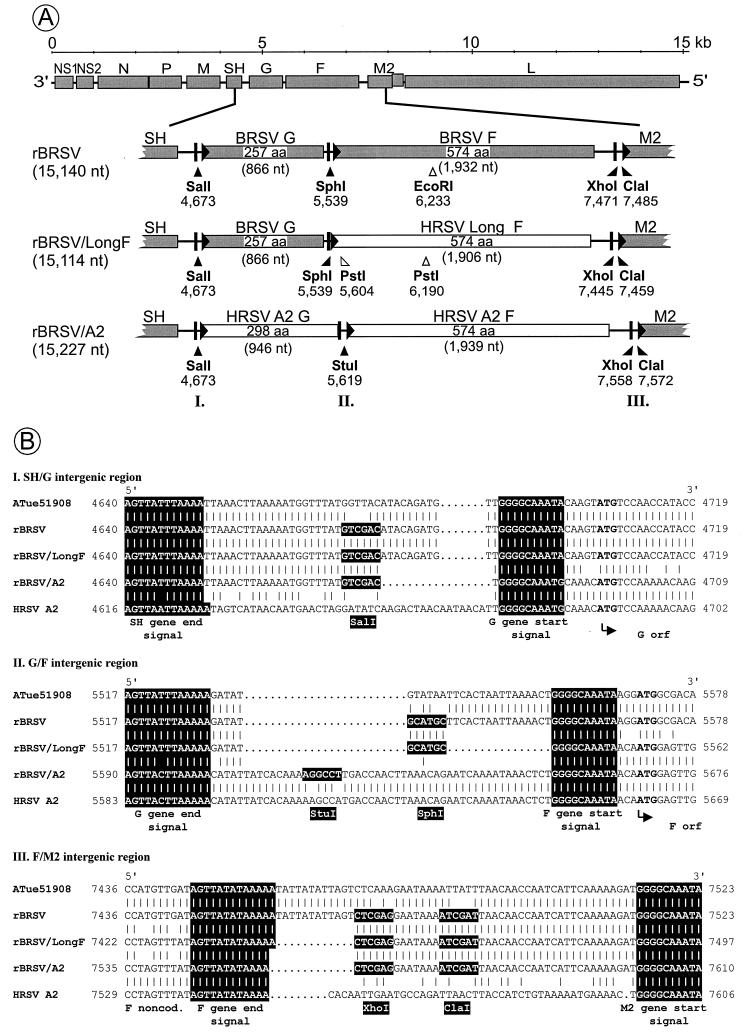FIG. 1.
Construction of chimeric rBRSV in which the F gene alone was replaced by its counterpart from HRSV Long to create rBRSV/LongF or in which the F and G genes were both replaced by their counterparts from HRSV A2 to create rBRSV/A2. (A) Diagram of the rBRSV genome, illustrating the replacement of the F and G genes with those of HRSV. The location of the ORFs are shown as shaded (BRSV) or open (HRSV) rectangles. The G and F genes are shown as enlargements, in which gene end/polyadenylation signals are represented by bars, gene start signals are shown as filled triangles, and the locations of synthetic restriction sites are indicated by filled arrowheads with the position in the complete antigenome sequence shown underneath. Naturally occurring PstI and EcoRI restriction sites used for differentiation of PCR products obtained from recombinant viruses are indicated by open arrowheads. The lengths of the fragments framed by the marker restriction sites are indicated in parentheses. The genome length of each recombinant virus is indicated on the left in parentheses. The roman numerals (I, II, and III) refer to intergenic regions which are expanded in panel B. (B) Alignment of the SH/G (I), G/F (II), and F/M2 (III) intergenic regions of biologically derived BRSV strain ATue51908 (top line), its recombinant version rBRSV (second line), the chimeric virus rBRSV/LongF (third line), the recombinant chimeric virus rBRSV/A2 (fourth line), and rHRSV strain A2 (bottom line). The sequences are shown as DNA-positive strands. Gaps are indicated by dots, gene start and gene end signals are shaded, and translation start codons are in boldface. Restriction sites are indicated, with recognition sequences shaded. Numbering refers to the antigenomic positions (for BRSV, ATue51908, GenBank accession no. AF092942; for HRSV strain A2, GenBank accession no. M74568, further modified as described in reference 4).

